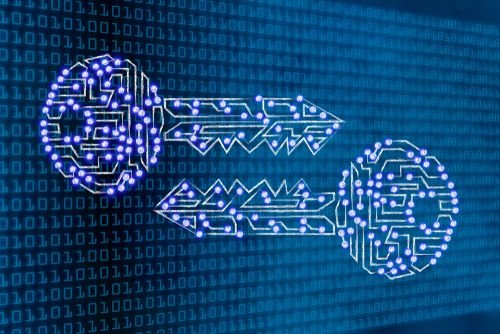
Cryptocurrency transactions have revolutionized the way we transfer value, offering decentralized and often more efficient alternatives to traditional financial systems. However, the rise of cryptocurrencies has also introduced a range of security concerns that can pose significant risks to users. These concerns encompass various aspects, from the technology underlying cryptocurrencies to the behaviors and practices of users and service providers. This article explores the primary security concerns associated with cryptocurrency transactions and offers insights into how these challenges can be mitigated.
Key Security Concerns
Private Key Management
In the world of cryptocurrencies, private keys are the cryptographic keys that grant users access to their digital assets. The security of these keys is paramount; if a private key is lost or stolen, the associated assets can be irretrievably lost. Unlike traditional bank accounts, where password recovery options are available, cryptocurrency transactions are irreversible, and there is no central authority to appeal to for recovery.
Phishing and Social Engineering Attacks
Phishing attacks are a common threat in the cryptocurrency space, where attackers impersonate legitimate entities to steal sensitive information, such as private keys or login credentials. These attacks often involve fraudulent emails, websites, or social media accounts that trick users into revealing their information. Social engineering attacks exploit human psychology to manipulate individuals into compromising security protocols, making them particularly dangerous.
Malware and Hacking
Malware, including keyloggers, ransomware, and trojans, can be used to steal cryptocurrency assets. Attackers may use malware to gain access to a user’s private keys or wallet passwords, enabling them to transfer funds without authorization. Additionally, cryptocurrency exchanges and wallets are frequent targets of hacking attempts. Compromised security on these platforms can lead to significant financial losses for users.
Double-Spending
Double-spending is a potential issue in digital currency systems, where the same digital token is spent more than once. In the context of cryptocurrencies, this can occur if a user successfully makes two transactions with the same funds before the network can confirm the transactions. This risk is more prevalent in cryptocurrencies with lower network security or fewer participants, making it easier for malicious actors to manipulate the system.
51% Attacks
A 51% attack occurs when a single entity or group gains control of more than 50% of a blockchain network’s hashing power. With this majority control, attackers can manipulate the blockchain, including reversing transactions and double-spending coins. While 51% attacks are more challenging and less likely on larger and more decentralized networks like Bitcoin, they remain a concern for smaller cryptocurrencies with lower mining power.
Regulatory and Legal Risks
The regulatory landscape for cryptocurrencies is still developing, and different jurisdictions have varying levels of oversight and enforcement. This uncertainty can lead to legal risks for users, especially in regions where cryptocurrency transactions may be restricted or banned. Additionally, regulatory actions can impact the security and stability of cryptocurrency markets, influencing prices and liquidity.
Mitigating Security Risks
Best Practices for Private Key Management
To secure private keys, users should consider the following best practices:
– Hardware Wallets: Use hardware wallets, which are physical devices that store private keys offline. This reduces exposure to online threats, such as hacking and malware.
– Cold Storage: Store large amounts of cryptocurrency in cold storage, which means keeping the private keys offline and away from internet-connected devices.
– Backup and Recovery: Maintain secure backups of private keys and recovery phrases in multiple locations. These backups should be stored securely and only accessible by trusted individuals.
Awareness and Education
Users should educate themselves about common phishing and social engineering tactics. Being aware of these threats can help users recognize and avoid suspicious emails, websites, and social media accounts. Additionally, users should verify the legitimacy of any communication related to their cryptocurrency holdings and avoid clicking on unsolicited links.
Secure Platforms and Practices
When selecting cryptocurrency exchanges and wallets, users should prioritize platforms with strong security measures, such as two-factor authentication (2FA), encryption, and cold storage solutions. It’s also crucial to regularly update software and applications to protect against known vulnerabilities.
Transaction Confirmation and Verification
To mitigate the risk of double-spending, users should wait for a sufficient number of confirmations on the blockchain before considering a transaction final. The number of required confirmations may vary depending on the value and urgency of the transaction.
Diversification and Risk Management
Diversifying cryptocurrency holdings across multiple assets and platforms can reduce the impact of potential security breaches. Users should also stay informed about regulatory developments and be prepared to comply with relevant laws and regulations in their jurisdiction.
Conclusion
While cryptocurrencies offer numerous benefits, including decentralization and efficient transactions, they also come with unique security challenges. Understanding and addressing these concerns is crucial for users to safeguard their digital assets. By adopting best practices for private key management, staying vigilant against phishing and malware, and choosing secure platforms, users can mitigate many of the risks associated with cryptocurrency transactions.
As the cryptocurrency market continues to evolve, so too will the security threats and solutions. Ongoing education, awareness, and the adoption of robust security measures are essential for navigating this dynamic landscape safely. By staying informed and proactive, users can protect themselves and their investments in the ever-changing world of cryptocurrencies.
ALSO READ: Impact of AI on Job Markets: Opportunities and Challenges








